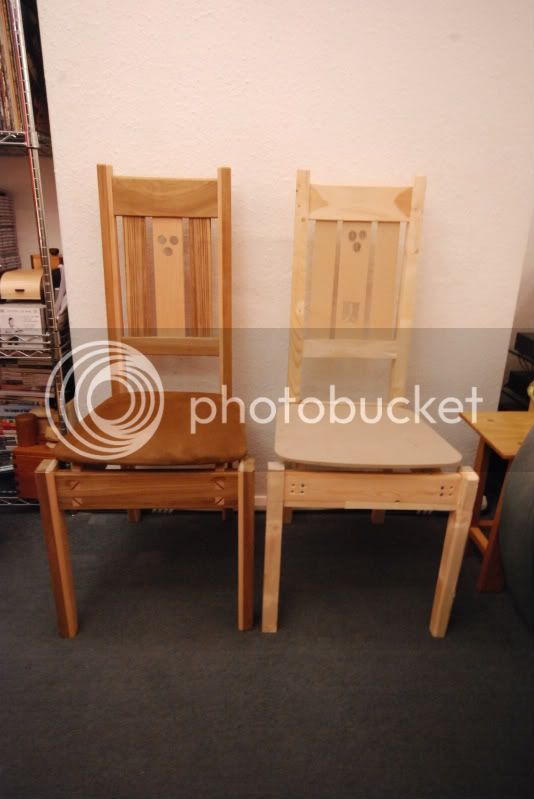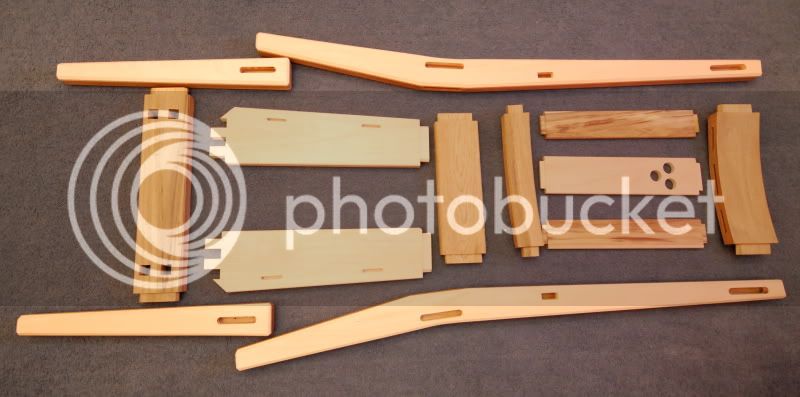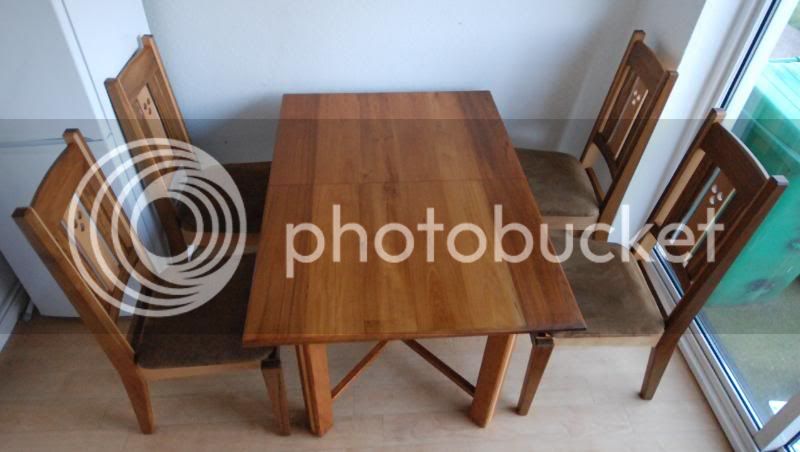No skills
Established Member
Hello
I have a couple of chair questions I hope you can help with. I have a quantity of par beech that's been getting in the way for a long while, I think it's enough to make us a set of 4 dining chairs so I fancy having a go
The beech is a bit small in section for the back legs but should be fine if I laminate two pieces together and cut the shape out of that.
So first questions are..
What sort of angle should I be aiming for when making the back rest of a dining chair? As in the reclining angle from the seat upwards.
Seat angle, how much slope from the front of the chair to the back? I think the actual seat will be a foam covered plywood piece - if that makes a difference.
Should the chair taper in width from front to back? This is the one part of building the chair frame that bothers me - angled tenon/mortises - I'll probably cheat and use machines but even still this must be tricky.
That's it for the moment, once I've got some angles sussed I can start drawing up a full sized one on some hardboard.
Cheers!

I have a couple of chair questions I hope you can help with. I have a quantity of par beech that's been getting in the way for a long while, I think it's enough to make us a set of 4 dining chairs so I fancy having a go
The beech is a bit small in section for the back legs but should be fine if I laminate two pieces together and cut the shape out of that.
So first questions are..
What sort of angle should I be aiming for when making the back rest of a dining chair? As in the reclining angle from the seat upwards.
Seat angle, how much slope from the front of the chair to the back? I think the actual seat will be a foam covered plywood piece - if that makes a difference.
Should the chair taper in width from front to back? This is the one part of building the chair frame that bothers me - angled tenon/mortises - I'll probably cheat and use machines but even still this must be tricky.
That's it for the moment, once I've got some angles sussed I can start drawing up a full sized one on some hardboard.
Cheers!














































